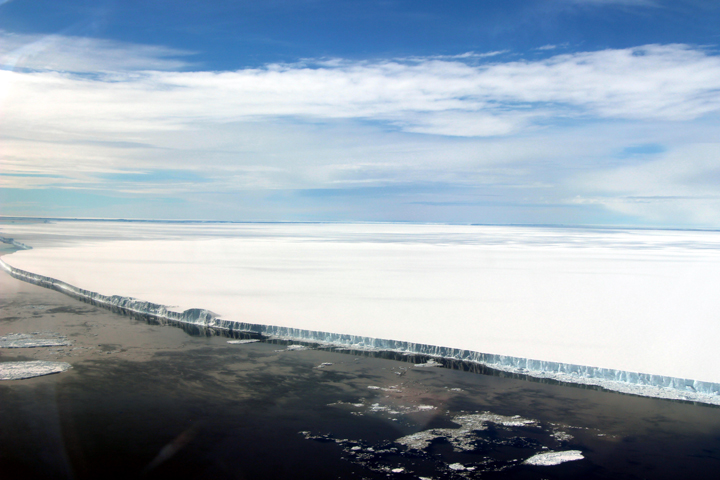
NASA’s Operation IceBridge, now in its ninth year, is an airborne mission flown annually over both polar regions to map the ice. A few flights during the 2017 campaign took scientists and instruments over Antarctica’s newly reshaped Larsen C ice shelf.
One of the big changes the scientists observed was the calving of an iceberg from the Larsen C ice shelf. Nathan Kurtz, IceBridge project scientist, said in a statement:
We observed the crack across the shelf during the campaign last year; it has since broken through and produced a huge iceberg.
The iceberg from Larsen C, named A-68A, was photographed during a flight on November 12, 2017. The photo above was acquired by the Digital Mapping System (DMS), which as essentially a downward-looking digital camera pointed out a window on the belly of the aircraft. This image shows part of the giant iceberg’s edge (the side closest to the shelf) and open water.
Scientists estimate that the edges of the shelf and iceberg tower about 100 feet (30 meters) above the surface of the sea. Some mélange – a mix of ice types – appears attached to the iceberg, and blocks of ice have fallen away, giving the berg’s edge giving it an angular appearance.

Enjoying EarthSky so far? Sign up for our free daily newsletter today!
Donate to EarthSky: Your support means the world to us
Bottom line: Photos of giant iceberg A-68A, that calved from Antarctica’s Larsen C ice shelf.











